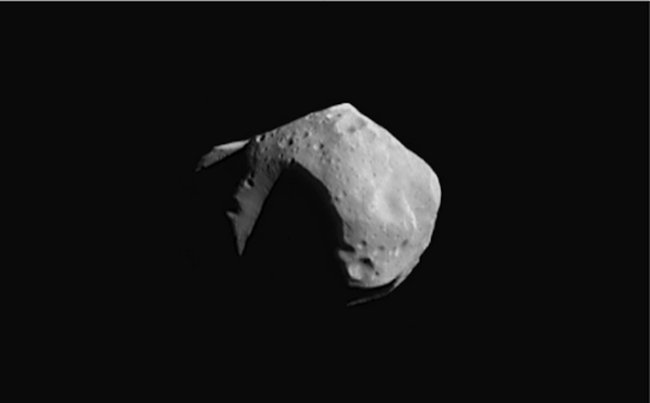 (NASA) Photograph of a different asteroid, 253 Mathilde.
(NASA) Photograph of a different asteroid, 253 Mathilde.
Asteroids might not look like much on the outside, but you shouldn’t judge a book by its cover.
Underneath the surface of some asteroids is a treasure trove of a type of mineral, called platinum, that is rare on Earth but extremely lucrative — 1,000 cubic centimeters of platinum is worth close to $ 1 million. And asteroids have a lot more than that in addition to other rare and precious materials.
One of these platinum-loaded asteroids will be flying by Earth on Sunday, July 19.
And this particular one, called asteroid 2011 UW-158, is thought to harbor anyhwere from $ 300 billion to $ 5.4 trillion worth of platinum and other precious metals and materials. Astronomers can estimate this by studying the object’s size as well as its general composition with instruments called spectrometers that measure the intesntiy of light from an object.
Although asteroid mining is a goal for the near-future of space exploration, we don’t have the technology right now to mine one. What’s more, even at it’s closest approach, the asteroid will still be 1.5 million miles from Earth — that’s about 6 times farther than the Moon.
According to the Goldstone Radar Observatory, the size of 2011 UW-158 is roughly 1500-feet wide. So, spotting it at a distance of 1.5 million miles would be like trying to see an object one hundredth of an inch wide from a mile away. You won’t be able to see it with the naked eye.
Luckily, the online observatory, Slooh, will be using their team of telescopes in the Canary Islands to spot the asteroid as it flies by, and they will be broadcasting the views online.
The broadcast will start at 6 p.m. ET on Sunday and will include commentary from host Eric Edelman and Slooh astronomer Bob Berman about the asteroid and the lucrative material it harbors.
You can watch the broadcast in the livefeed provided at the end of this post.
“It’s always fun when an asteroid whooshes past our world,” Berman said in a Slooh announcement. “What makes this unusual is the large amount of platinum believed to be lurking in the body of this space visitor. Can it be mined someday, perhaps not too far in the future?”
Asteroid mining could be an extremely useful business for agencies like NASA, which hopes to capture an asteroid and bring it in orbit around the Moon soon enough for future astronauts to visit it and collect samples by as early as 2025.
NASA says that the materials frozen in asteroids could “be used in developing the space structures and in generating the rocket fuel that will be required to explore and colonize our solar system in the twenty-first century.”
Check out the live Slooh broadcast below starting at 6 pm ET on Sunday, July 19:
NOW WATCH: 5 ways the world could really end
More From Business Insider
- Fly over Pluto’s giant icy mountains and frozen plains in this awesome new footage from NASA
- A nearby black hole just erupted for the first time in 26 years and scientists are ecstatic
- Physicists just discovered a different type of particle that will spawn an entirely new field of research




























